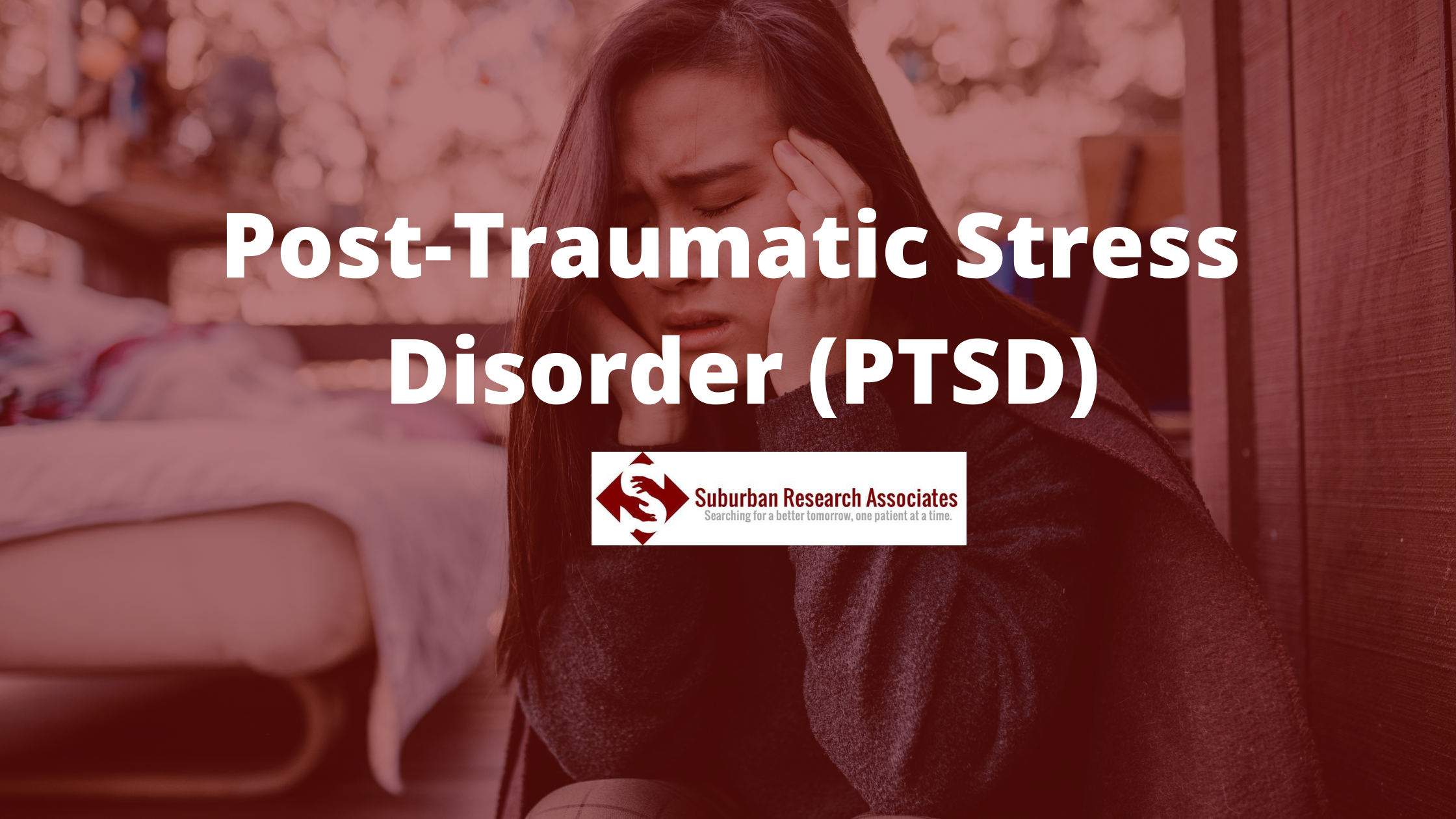Definitions and Symptoms of PTSD:
PTSD can develop in any individual who has experienced or witnessed a traumatic event including but not limited to, combat/war, rape, accident, death, serious injury, violence, assault, etc. However, not everyone who experiences these events will develop PTSD.
PTSD develops when a person has persistent intrusive thoughts, nightmares, flashbacks, feeling as though one is reliving the event, depression or sadness, hypervigilance, fear, and avoidance of things that remind them of the event.
Everyone with PTSD experiences the condition differently. Even two people who have experienced the exact same event will likely have different symptoms.
There are four categories we use to describe the symptoms of PTSD: intrusion (intrusive thoughts, dreams, nightmares, flashbacks), avoidance (avoiding certain sights, places, people, things that are reminders or triggers of the event), alterations in cognition and mood (loss of trust in all people self-blame, fear, anger, etc.) and alterations in arousal and reactivity (self-destructive behavior, outburst of anger, mood swings, increased startle responses).
Read More: What is Posttraumatic Stress Disorder (PTSD)?
Diagnosis:
A diagnosis of PTSD is based on a variety of criteria needing to be met in order to make a formal diagnosis. That criterion includes exposure to actual or threatened death, serious injury, sexual violence, one or more intrusive symptoms (i.e. dreams, flashbacks, distress, etc.), consistent avoidance of things related to the event, two or more symptoms associated with negative alterations in mood and cognition, two or more symptoms of alterations in reactivity and arousal. These symptoms must also be present for one month and other potential causes of these symptoms such as medical or psychological should also be ruled out before making a formal diagnosis. Upon diagnosis, a subtype of PTSD such as PTSD with dissociative symptoms (depersonalization or derealization), or PTSD with delayed expression (criteria for a diagnosis not present until at least 6 months after the event occurred) (APA, 2013 pp. 271-272).
Types of PTSD:
· Dissociative PTSD: As mentioned above, PTSD can come with symptoms of dissociation either through depersonalization or derealization.
· Uncomplicated PTSD: PTSD is considered uncomplicated only if a patient’s diagnosis of PTSD does not exist with any other mental health condition.
· Complex PTSD: Complex PTSD occurs when a patient has endured multiple traumatic events or experiences over a period of a few months or years. Because of the toll trauma takes on the mind of body, multiple traumas may also present a higher risk for physical symptoms such as fatigue, pain, palpitations, etc.
· Co-Morbid PTSD: Occurs when a patient has one or more other mental health diagnoses along with PTSD.
· Acute Stress Disorder: The symptoms and manifestations of acute stress disorder are very similar to PTSD; however, the difference lies in the persistence, severity, and timing of symptoms. Symptoms of acute stress disorder typically occur within 3 days to 1 month of the event. It could also include learning of an event that happened to someone else.
Read More: Types of PTSD
Trauma without PTSD:
It is important to note that even if a person does not meet criteria for a formal PTSD diagnosis, that does not invalidate the trauma they have experienced. There are a myriad of events and situations that can leave an individual with traumatic impacts and symptoms, but they just don’t align with the PTSD criteria set forth for a formal diagnosis. What is considered traumatic may vary from person to person. An event that may be considered “minor” for one person, may leave a largely traumatic impact for someone else.
Some types of trauma that aren’t always included in a PTSD diagnosis are betrayal trauma from being betrayed by others, especially in younger years of life; systemic trauma from harm done from certain systems or institutions; and racial trauma from acts of racism or prejudice.
What Can You Do:
Whether you have been formally diagnosed with PTSD, have experienced trauma, or know someone who has, there are multiple things you can do to support yourself and others.
First and foremost, if you suspect you have PTSD, be sure to talk with your doctor, therapist, or psychiatrist. PTSD or trauma in any form can feel incredibly overbearing and intrusive to live with. You should not have to go through it alone.
If you know someone who has experienced trauma, has been diagnosed with PTSD, or discloses a traumatic experience to you, the best thing you can do is be a supportive and provide a listening ear. Taking the time to listen to their story is something that survivors of PTSD and trauma need most. People who have experienced trauma may have a hard time asking for or seeking professional help. It can be beneficial to have someone to support them through that process.
Treatment for trauma and PTSD typically includes talk therapy, medication intervention, or a combination of both. Other treatments that have recently surface include Eye Movement Desensitization Therapy (EMDR), which is a technique that helps re-train the brain after trauma; neurofeedback, which helps re-wire the brain from a traumatic state; and trauma-focused Cognitive-Behavioral Therapy.
At Suburban Research Associates, we also are regularly enrolling for PTSD clinical trials. If you’ve tried previous treatments for PTSD, and are seeking an alternative, reach out to us to see if you might be eligible for one of our studies.
References and Resources
American Psychiatric Association. Diagnostic and statistical manual of mental disorders. 5th ed. Arlington, VA: American Psychiatric Association; 2013
Moore, M. (2021, May 24). Types of PTSD. Psych Central. Retrieved May 27, 2022, from https://psychcentral.com/ptsd/types-of-ptsd#uncomplicated-ptsd
What is posttraumatic stress disorder (PTSD)? Psychiatry.org – What is Posttraumatic Stress Disorder (PTSD)? (n.d.). Retrieved May 27, 2022, from https://psychiatry.org/patients-families/ptsd/what-is-ptsd


